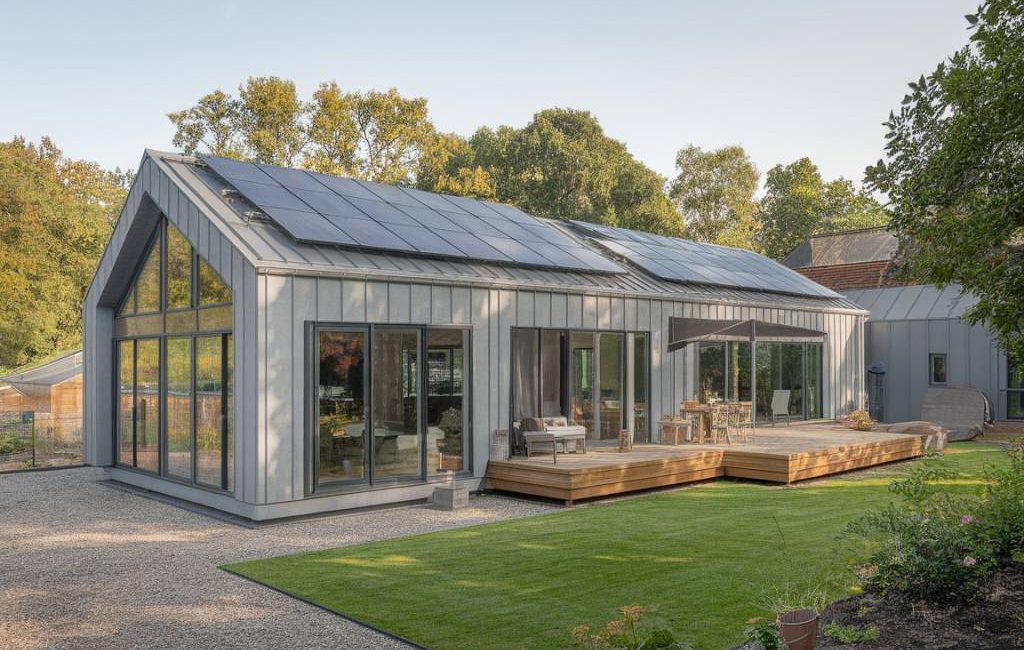« `html
Why Energy-Efficient Home Improvements Matter
As energy costs continue to rise and environmental concerns become more pressing, many homeowners are looking for ways to improve the energy efficiency of their homes. Energy-efficient home improvements help reduce energy consumption, lower utility bills, and decrease your overall carbon footprint. By making targeted upgrades, you can create a more comfortable living environment while playing a part in the global effort to conserve resources.
Benefits of Energy-Efficient Upgrades
Investing in energy-efficient home improvements offers numerous advantages beyond financial savings. Some key benefits include:
- Lower utility bills: Energy-efficient upgrades can significantly reduce heating, cooling, and electricity costs.
- Enhanced home comfort: Improved insulation and modern HVAC systems help maintain consistent indoor temperatures.
- Increased property value: Homes with energy-efficient solutions tend to have higher resale values and attract more buyers.
- Environmental benefits: Consuming less energy means a reduced carbon footprint and a more sustainable lifestyle.
- Potential tax credits and incentives: Many governments and utilities offer rebates and tax incentives for energy-efficient home improvements.
Top Energy-Efficient Home Improvements
Upgrade to Energy-Efficient Windows
Windows play a crucial role in maintaining your home’s energy efficiency. Traditional single-pane windows allow significant heat transfer, leading to energy loss. Replacing them with double or triple-glazed windows equipped with low-emissivity (low-E) coatings can help retain heat in the winter and reflect heat in the summer.
Improve Home Insulation
Proper insulation is one of the most effective ways to enhance home energy efficiency. Insulating walls, floors, and attics helps prevent heat loss during colder months and keeps cool air inside during summer. Common insulation materials include fiberglass, spray foam, and cellulose, with each offering varying R-values for optimal thermal performance.
Install a Smart Thermostat
Smart thermostats help optimize heating and cooling usage by learning your preferences and adjusting temperatures automatically. These devices can be managed remotely via smartphone apps, ensuring that energy isn’t wasted when no one is home. Many models also provide energy reports, allowing homeowners to track and reduce consumption effectively.
Switch to LED Lighting
Replacing traditional incandescent or CFL bulbs with LED lighting is a simple yet impactful energy-efficient upgrade. LED bulbs consume significantly less energy, have longer lifespans, and produce less heat. This reduces electricity consumption and maintains a more stable indoor temperature.
Upgrade to Energy-Efficient Appliances
Older household appliances, such as refrigerators, washing machines, and dishwashers, tend to consume more energy than modern energy-efficient models. Look for ENERGY STAR-rated appliances, which meet strict efficiency guidelines and help lower electricity and water usage over time.
Install Solar Panels
For homeowners looking to make a long-term investment in energy efficiency, installing solar panels can be a game-changer. Solar energy can power appliances, lighting, and even heating systems, reducing reliance on conventional energy sources. While the upfront costs can be high, federal and local incentives help offset expenses, making solar panels an attractive option.
Use High-Efficiency HVAC Systems
Heating, ventilation, and air conditioning (HVAC) systems account for a significant portion of household energy consumption. Upgrading to a high-efficiency furnace, air conditioner, or heat pump can reduce energy use while improving comfort. Regular maintenance, such as changing air filters and sealing ductwork, also ensures optimal efficiency.
Seal Air Leaks
Even minor air leaks can lead to significant energy waste by allowing conditioned air to escape. Caulking and weatherstripping doors and windows help prevent drafts and improve your home’s overall insulation. Conducting a home energy audit can also help identify problem areas that require sealing.
Harvest Rainwater and Improve Water Heating
Energy efficiency extends beyond electricity use. Installing a rainwater harvesting system reduces the demand for municipal water supplies, which in turn decreases energy usage associated with water treatment and transportation. Additionally, upgrading to a tankless water heater or solar water heating system can lower water heating costs while improving efficiency.
Choosing the Right Energy-Efficient Improvements
Each home has unique energy challenges, so it’s essential to determine which upgrades will provide the most significant benefits. Conducting a home energy audit—either professionally or using a DIY approach—can help identify inefficiencies and prioritize improvements. Factors such as geographic location, home size, and budget should also be considered when planning upgrades.
Taking Advantage of Incentives and Rebates
Many governments and utility companies offer incentives and rebates for energy-efficient home upgrades. Homeowners can check with local energy providers or use online resources like the Database of State Incentives for Renewables & Efficiency (DSIRE) to find available programs. Taking advantage of these incentives can make energy-efficient improvements more affordable and increase the return on investment.
Final Thoughts
Implementing energy-efficient home improvements is a smart investment that benefits both homeowners and the environment. By making strategic upgrades such as installing efficient windows, enhancing insulation, and using modern appliances, you can reduce energy consumption while enjoying long-term savings. Whether you start with small changes or undertake larger projects, every step toward energy efficiency contributes to a more sustainable and cost-effective home.
« `





